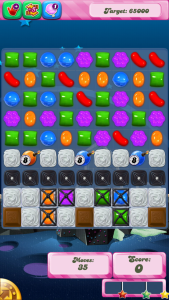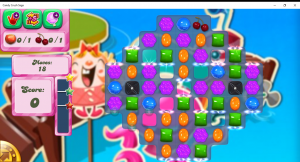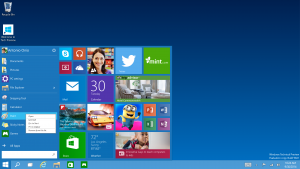The effort has paid off for Candy Crush
Previous coverage
It is now simple to port iOS and Android apps to Windows 10
My Comments
I have played the Android version of Candy Crush Saga and this has performed very smoothly on a variety of Android phone devices that I owned.
But Microsoft and King, the developer of this popular casual game, have worked together and used this game to approach the idea of porting an app from a mobile platform like iOS and Android to a regular-computing platform like Windows 10 along with the XBox One games console. The goal is to make an app or game take advantage of what the subequent platform has to offer without destroying the usage experience that the software is know for.
In the previous article, I cited the computing scene in the 1980s where there was a requirement for games developers to have a game on as many platforms as possible with the best examples being Atarisoft, Sierra and Broderbund. Atarisoft made a strong effort to port the legendary Atari games like PacMan, Asteroids and Centipede to a larger number of popular 1980s home computers while Sierra and Broderbund had games like the Kings Quest, Space Quest, Leisure Suit Larry and Carmen Sandiego franchises on platforms like the IBM PC, Apple II and Macintosh platforms and Commodore’s legendary games machines of all time. It is also very similar to how Minecraft has been ported between Windows, Macintosh, the mobile platforms and XBox One yet is still very playable.
After installing Windows 10 on my computer, I downloaded the Windows 10 port of Candy Crush Saga to assess how this port was to turn out, especially for mouse-based play. After playing a few rounds, the experience was very much similar to what it was like on the Android version. It had reminded me of the late 80s with Boulder Dash where I had played that game on the Commodore 64 and the Apple IIe where the game yielded the same “boulder-shifting” user experience with the same graphics, sound and gameplay on both those platforms.
But the game’s interface didn’t depend on whether you used a touchscreen or a mouse, Nor did it depend on whether you had the game in a window or in a full-screen mode. Candy Crush Saga was still as playable on the Windows 10 platform as it was on the Android platform.
Microsoft is on a winner with their Project Islandwood and Project Astoria software-development kits in that someone could get a casual game across the mobile platforms and Windows to the same expectations as the late ‘80s home-computing era. This is where each platform’s assets can be taken advantage of very easily yet the user experience is kept consistent.
If Microsoft, Google, Apple and others use their software-development knowhow properly, they could encourage app developers, especially games studios, to have apps and games that maintain a consistent high-quality user interface no matter the computing platform they run on.




